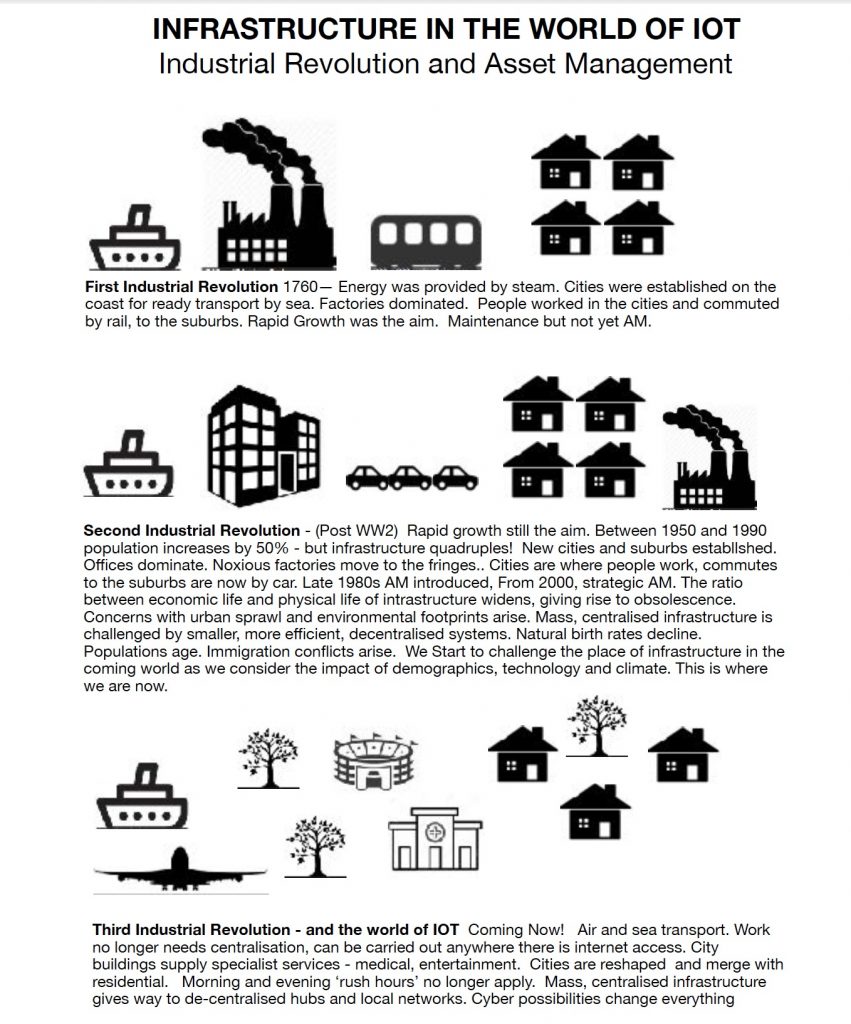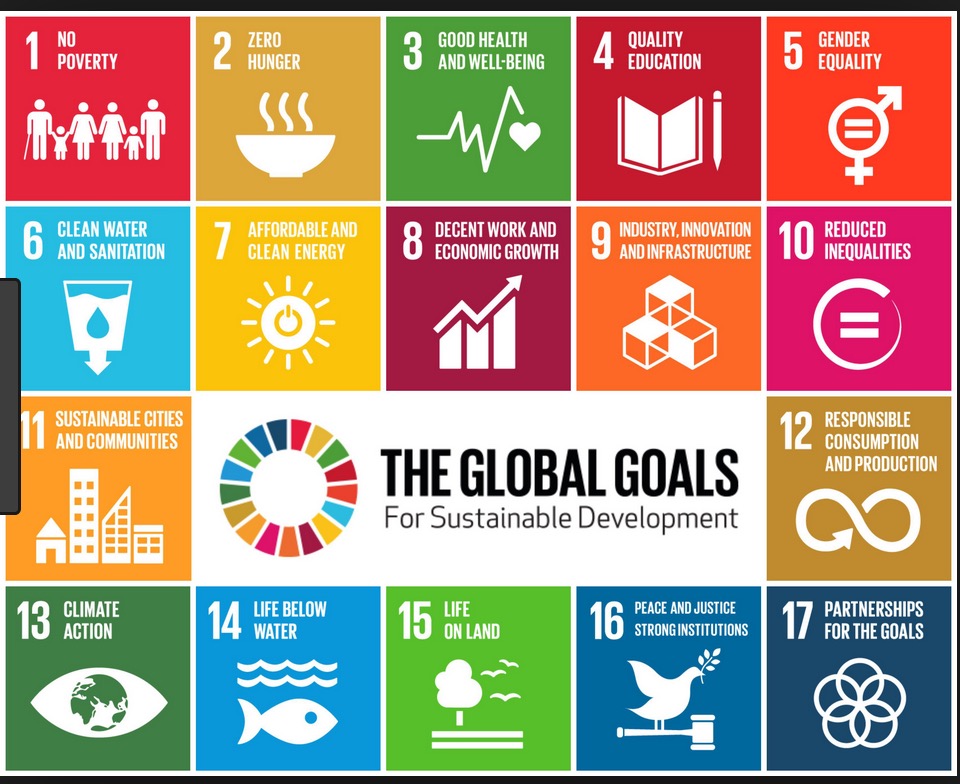
Or managed luck? I have not hidden the fact that an enormous amount of luck has blessed my work in asset management since the very beginning. But is it blind luck, ( just sheer good fortune)? Or did I somehow manage some of it, simply by being dedicated to making things work and being prepared to take advantage of any opportunities that presented themselves?
I have never been inclined to differentiate, just grateful for it all. However perhaps we should consider this for we all have luck (good and bad) and, while we know that we must take responsibility when things don’t work out so well, we are often far too modest about doing the same when things go well. But, surely, recognising what we did ‘right’ as well as what we did ‘wrong’ is equally important for progress?
Today I have posted Chapter 8 about the fortuitous events that made it possible to transit from a research position with the Parliamentary Public Accounts Committee to a position where I could try implementing some of the ideas we had learnt. All 8 chapters are now available.
Now, looking back over your own successes, why not think about why they happened.
And while you are at it, why not tell everybody in the comments below.
It would cheer us up. And we really need to have some good news now.

Can’t stand economists? I often don’t care much either – and I am one! But this week I am proud to be among the number of ‘new economists’, economists for whom human beings are actually people, and the whole reason why we engage in economic activity, and not mere dispensible cyphers in the production cycle.
Kate Raworth, author of “Doughnut Economics – Seven ways to think like a 21st century economist” and the team at Rethinking Economics got together to issue a challenge to find an 8th way. Contributors could use any medium but they had to tell their story in 3 minutes or less. There were three sections, one for schools, one for universities, and one for ‘everyone else’. I like the emphasis on the young – where better to get new ideas?
Last Friday I posted the first place University Winner, “Legal Rights for Nature” voiced over a video of beautiful New Zealand. That encouraged me to see what the other winners came up with. You might like to see them too. So go here for the Schools winners (great ideas from passionate young people, a joy to hear and watch – they all use video, they are young!), the University winners and Everyone else.
If you are asking yourself why, as a non-economist, this should be of interest to you, I will draw your attention to a brilliant article in the New Economics Network of Australia (NENA) Journal by Steve Liaros “Economic Disruptions will reshape our cities” His thesis is simple: “Economics is about how we organise ourselves to satisfy our needs and wants. This ultimately translates into the arrangement of human settlements; the spatial relationship between living spaces, work spaces and their connection to food, water, energy and other resources needed for surviving and thriving. The economic disruptions mentioned above will transform our cities and the patterns of human settlements.”
What delighted me about Steve’s article is that it is a beautifully argued elaboration of the story of the next stage of AM, that Jeff Roorda and I outlined in our article ‘The Third Asset Management Revolution’ back in April 2018. The original graphic for that story is reproduced here.
So there you are – economists and asset managers on the same page! Who would believe it?

Of Hammers and Nails
If the only tool you have is a hammer, every problem looks like a nail! But the reverse can also be true as I found this week. If you have a nail you cast around for what can be pressed into service as a hammer (A meat tenderiser works well.)
My philosophical nail is the problem of sound infrastructure decision making and it turns out that, even when I think I am taking time out to relax, the hammer search continues.
1. “13 Minutes to the Moon”
This is a new BBC podcast series that I am listening to that covers the planning and the almost decade-long lead up to the Apollo landing. The ’13 Minutes’ refers to the last 13 minutes before the landing when a number of times problems arose and it very nearly didn’t happen. Although you know the end of the story, the premise behind this podcast is that few of us really know the beginning. It is a documentary style podcast with lots of audio clips from those involved at the time. Good to listen to.
It got me thinking.
JFK’s decision to put a man on the moon is regarded as the classical successful mega project, not only because he did what was considered an almost impossible task but achieving it generated magnificent technology spinoffs, moving America way ahead of the world in technology. However, there was a more serious reason for the project that went beyond mere scientific curiosity. The US needed to regain the upper hand in the Space Race where the USSR had made some spectacular early gains, gains causing anxiety in the American people as well as defence concerns for the government. Americans were used to thinking of themselves as the pre-eminent ‘can do’ people of the world and these early moves by the USSR were impacting morale. So, in that sense, JFK’s announcement could be considered a successful move whether or not Apollo actually landed on the moon. (At election times, how many mega project announcements could be seen simply for their announcement value?)
I started to think of other successful mega projects, like the building of the Panama Canal. Again there were multiple layers of reasons for the project – defence, trade, global power, engineering daring do – and, of course, the use of new and untried technology to solve both anticipated and unanticipated problems.
It led me to ask the question – what are the characteristics of succesful mega projects?
2. Isambard Kingdom Brunel
Maybe it was thoughts of engineering success, or maybe the resurgence of interest in rail projects recently (the Very Fast Train, the Inland Freight Rail Track, the Melbourne Metro Loop), but my thoughts turned to the legendary Isambard Kingdom Brunel, who, amongst other things, masterminded the rise of rail in the UK. I wasn’t many pages into Steven Brindle’s “Brunel: The Man Who Built the World (Phoenix Press, 2006) before I started to see parallels with the time in which Brunel lived and where we are now.
When Brunel was born, (1806) England had just won a great naval victory against France – using wooden ships powered by wind! Most people at that time travelled by horse power and buildings were made of brick or stone. By the time he died in 1859
“ iron-hulled and steam-powered ships had arrived, pioneering new materials and methods of construction had been utilised in the fabrication of buildings that – in their scale and design – were like nothing man had ever constructed before and the road and the canal were being challenged by the new railway system with horse power gradually being replaced by steam power.” Brindle, Steven. “Brunel: The Man Who Built the World (Phoenix Press).
The Age of Disruption
The changes that occurred during the 50 odd years that Brunel lived, relatively speaking – power, transport, organisation and governance – were, at the very least, as disruptive as those that we face today. The era of steam, iron and rail was just beginning and Brunel ran with it.
What, I wonder, would Brunel be doing today?
I doubt that he would be building rail (the equivalent of the status quo wind powered wooden ships in Brunel’s time). Maybe he would be designing track for automated driverless cars and carriages, and building in solar energy access. Or maybe implementing the Hyper-Loop? In any case, would he not be advancing the state of technology?
Which brings me to ask the following questions:
-
Do mega projects need a technology advancement component to be successful, especially today, when technology is driving everything?
-
What other mega trends, if any (climate change, demographics) trump this or can/should they also feature?
-
Does a mega project require a ‘mega’ purpose – e.g. defence, global domination, economic or environmental survival?
Hobson’s choice
Saturday before last as I stood in line to vote, the woman next to me said she did not believe that either of the major parties had policies that were helping Australia. I said that view was widely shared. Between us we decided to vote for the Party that fielded a local female representative and also a federal female representative on the basis that if we had enough women we could moderate the most egregious of profit seeking decisions and instead focus on proposals that helped people. The election results were hardly cheerful in that regard.
Yet the sun still shines, the leaves turn russet and gold, and we continue to do our best. I cannot complain. Any week in which you reconnect with an old friend and also solve a month’s long problem has to be a pretty good week.
David Ness – and the impact of overbuilding
I am a member of Research Gate, an academic organiation that keeps track of citations of your articles so you know who is using your work and what they are doing. Even though I ceased to be an academic years ago, every week I get one or two citations and this past week I discovered that David Ness, one of my first PhD students, and now an Adjunct Professor at the University of South Australia, was launching his first book ‘The Impact of Overbuilding on People and Planet” published by Cambridge Research Scholars. We had lost contact with each other years ago as both of us busied ourselves in our own work and David travelled extensively in Asia whilst my own travel was mostly Europe and North America. I rang to congratulate him and we met for coffee and talked for hours. A happy time. I will tell you about his work in my Wednesday post.
A problem solved.
A couple of months ago while I was in Melbourne to promote the ideas we were developing in Talking Infrastructure, Sally Nugent (the former CEO of the Asset Management Council) had suggested that if we wanted people to think more seriously about infrastructure decision making we would do well if we could develop a framework that others could use, and also find a way so that the fruits of their application of the framework coud be made widely available so that all can share in the learning. I had to agree it was a great idea, but at the time I could not think of how we could do it. So it sat on the back of the head as ideas do.
Meanwhile I had met Kate Quigley (at a bus stop!) a visiting American who was teaching Civil Aviation Management at the local campus of the University of South Australia. We discovered we shared an interest in teaching the art of creating good questions and she asked me if I would speak with her students. I agreed, and in designing an approach that I thought would be both educational and entertaining I thought of the hypothetical I had created for EAROPH in Brisbane and designed a question version that would lend itself to classroom teaching. As I thought about this it seemed to me that it also fitted Sally’s requirements. With Laura Mabikafola,General Manager, Skills Lab, (a Sage Group company), we are now in a testing phase, but it definitely seems to have promise for application not only in a lecture theatre but also within organisations or associations. Early days yet, but I will post more after we have done our testing.
Reading
David Ness: ‘The Impact of Overbuilding on People and Planet”
The Senate Inquiry – and Political Reactions
A few weeks ago in Brisbane I ran my first hypothetical. Its focus was the implementation of the United Nation’s 17 sustainability development goals. These goals, known as the SDGs, are for basic things like clean air and water, reducing hunger and poverty, increasing the quality of education, reducing gender inequalities and, in general, making life better for all Australians.
The results of the Senate Inquiry into the SDGs had just been released with a majority report (by Labor and the Greens) that said that the SDGs were important, we should be doing more, and recommended actions we could take. There was also a dissenting report (by the Liberal/National Coalition) that said, in effect, we were already doing everything and nothing would be served except more paperwork and anyway we don’t like the UN because it criticizes us unfairly (I’m not kidding about this last bit, this is what they said!) – and it concluded by saying ignore all the recommendations in the main report. So, there was not a lot of bi-partisan agreement there!
Well. who has the right of it?
Are we doing everything already or do we need to do more? According to a recent report by the Griffith Centre for Sustainable Enterprise, that looked at how the SDGs were being addressed (or not) in the policies of ten political parties.
“Australia’s ranking of 37 on the Sustainable Development Goals (SDGs) dashboard indicates that for a developed country there are aspects of Australian society that need to be altered if it deserves to be placed in the top 20 OECD countries”.
Australia has signed up to achieve the UN goals by 2030, however if the minority report correctly reflects the view and intentions of the Liberal/National coalition, we will not be able to rely on Government. Australian progress will need to be driven by concerned individuals and groups – our growing CIVIL SOCIETY, of which Talking infrastructure, along with many professional associations and NGOs, is a part.
Where to start?
The first thing to understand is that most people are unaware of this thrust by the United Nations. Ask anyone! Few know what they are. Many think that they don’t apply to us, but are for developing countries only. This is likely because of the UN’s earlier millenial goals which did apply only to developing countries.
The second thing is that there are 17 of these goals, with 169 specific targets. This is far too much for most of us to get our head around. Fortunately we don’t have to. Pick one or two that you feel strongly about and work to improve those! (just be aware of the others and mindful that what you do might impact another goal.)
Talking Infrastructure is now working with participants in the Hypothetical – all of whom were sent as representatives of their associations – to discuss what next steps can be taken since all of 17 goals either impact, or are impacted by, the infrastructure decisions we make.
Add your ideas to the hypothetical
The set up is this
” Six months have passed and the new government urgently wishes to address the issue of implementing the SDGs. Moreover it has realised that it has major leverage that has so far been little discussed – its power of the purse!
The Federal Government funds national infrastructure projects and provides substantial support to State and Local Government projects. The best and brightest (YOU) have been gathered together to explore how to take advantage of this.
Write some rules for evaluating infrastructure proposals so that they support the SDGs and Australia’s wellbeing.
Footnote: Thanks to EAROPH Australia for their courage in letting me play with this idea for them at their AGM

It has been a momentous week in Australia with our Federal Elections and the death of Bob Hawke (perhaps the last Prime Minister who was almost universally liked and respected – even by those who voted the other way) But throughout it all, each of us has got on with their life and work. This was my week. It started with a problem.
The Podcast
We had recorded our first podcast with many contributors. Gregory Punshon, our IT Director, had done a sterling job on the production side in between repairing major storm damage to his property and a run of internet outages, so that, with the exception of a small section we wished to re-record, our first episode was almost ‘in the can’. Happiness all round! Then we discovered we had been gazumped! AECOM had launched a podcast of their own called ‘Talking Infrastructure”. It was a sister podcast to ‘Talking Cities” that they had launched last year. It wasn’t focused on infrastructure decision making but it did have our name.
It took much of the week, but what initially appeared to be a serious problem, eventually resolved itself. We changed the name and in the process, developed a unique, stronger, clearer focus. Happiness returned. It just means a delay whilst we re-adjust – and, yes, re-record! More to come.
The Hypothetical
A few weeks ago, I ran a hypothetical for EAROPH Australia’s AGM, following the release of the Senate Inquiry Report into the implementation of the United Nation’s 17 Sustainability Development Goals (SDGs). Given that the Liberal minority report to the Senate inquiry hardly reflected enthusiasm, despite the fact that Australia has signed up to implement these goals by 2030, it looks as if the task of making Australia both fairer and stronger will fall to the Civil Society ( professional associations, community groups and NGOs) of which Talking Infrastructure is a part. I have written up the work done in Brisbane so that others can join in the fun of the hypothetical. I will post this on Wednesday.
Hope for the Future
The happiest conversation of this past week was two hours spent with a 19 year old barista at our local coffee shop. Chelsea is articulate, bright, cheerful, confident and, when not working, is studying criminal psychology. She is well informed about issues of the day and passionate about taking action to combat climate change. I have high hopes for this generation – provided that we do not damn their future by selfish infrastructure decisions made today. Let us not too blithely assume that just because we can ‘create jobs’ today, it is worth our young people having to pay the cost later. .
Researching :
Green infrastructure
Reading
Oren Klaff: Pitch Anything
Recommendation:
Worth exploring if you are a woman, employ a woman or want to support women in infrastructure Leadership. Criterion Conferences’ “Women in Transport and Infrastructure Leadership Summit” 19th – 22nd August 2019, Rydges on Swanston, Melbourne.
 Three great days in Melbourne in which I met with many asset managers for talks over coffee (or the hard stuff).
Three great days in Melbourne in which I met with many asset managers for talks over coffee (or the hard stuff).
The benefits of a podcast series addressing future change and its impact on infrastructure decisions today was readily recognised and the ability of the podcast to draw from the perspectives not only of those who are responsible for the supply of public infrastructure, (decision makers, analysts, managers and advisors) but also those who rely on infrastructure to achieve community and commercial outcomes was seen as something that people wanted to be involved in. Think those who supply and those who rely!
I was able to meet with Anne Gibbs, the current CEO of the Asset Management Council, who has been extremely helpful in providing follow up material, and with Sally Nugent, the former CEO, as well as a number of active AMC members including Andrew Sarah, Greg Williams and Kieran Skelton. I also had a very positive meeting with Jaimie Hicks, Business Development Manager of the Water Services Association, Australia.
Lara Morton-Cox of the Victorian Treasury drew my attention to innovative work they are doing to encourage future thinking to be built into agency asset management plans. It was also a pleasure to catch up with new friends and people I had not seen for some time – Roger Byrne, Claudia Ahern of Creative Victoria, Christopher Dupe now Manager, Capital Works Programs at Museums Victoria, Brenton Marshall, Shellie Watkins, Thomas Kuen of Melbourne Water, Steve Verity of TechOne, Roger Harrop, Ian Godfrey, Gary Rykers, Dr Nazrul Islam, David Francis, and Greg Williams,
On Friday morning I was able to catch up with Robert Hood, who is now working with Asia Development Bank developing asset management expertise and believes that our infrastructure decision making podcast may have relevance to their work. I also met Robert’s wife, Cherry, from Capital Works Planning at the University of Melbourne who had some interesting ideas and we will talk in October about student involvement in our podcasts.
In the afternoon, a magic time with Ashay Prabhu and his fantastic team of energetic, imaginative and committed young people at Assetic. And finally, a leisurely and interesting conversation over wine with Tom Carpenter, trainer and CEO of the Institute of Quality Asset Management.
I will be back in Melbourne mid October, so if you missed out this time, let’s catch up in October.
Penny will be in Melbourne this week meeting with those interested in participating in the podcasts, as researchers, publicists, administrators and/ or as on air talent. Later she will be in Brisbane, Canberra and Sydney and more information about those visits will be posted.
NOTE: Blog posts will now be on an occasional basis rather than regular twice weekly posts.
Write to penny@talkinginfrastructure.com if you would like to be invited to forthcoming podcast discussions.

Our podcast partner, the IPWEA, will hold its Asset Management Congress “Communities for the Future, Infrastructure for the next generation” in Canberra, 14-16 August. And Talking Infrastructure will be there – presenting and recording.
Talking Infrastructure will be selecting key topics, ideas and speakers at this congress to appear in our Talking Infrastructure Podcast. The intention, however, is not to simply reproduce the congress in podcast form, as interesting as that might be, but rather to use the ideas presented as the core, and to augment the ideas presented by asset managers, with viewpoints from other specialists and other disciplines, in order to build up a more complex picture. We will be drawing not only from the work of the invited speakers, but also from the commentary by the audience. So be there! Be in it!
This congress has been designed to be highly interactive – see the full program details here

‘Talking Infrastructure’ is about to produce a podcast series. Its focus is “rethinking infrastructure decision making for the 21st century”.
Partnership
We are delighted to welcome the partnership of the Institute of Public Works Engineering Australasia (IPWEA) in this venture.
Thinking IDM
Public infrastructure investments typically have a long life, affect large populations with diverse needs, extend over large territories, and are not only difficult (and sometimes impossible) to change or undo, but have high capital and ongoing costs, and substantial (and often insufficiently recognised) opportunity costs. For all these reasons, public infrastructure decision making has always been challenging. In other words, we have always had to think!
Rethinking IDM
But there is now an extra dimension. Change is always with us, so why do we consider 21st century change more critical? (Apart from the fact that it is where we are now!)
First there is the magnitude, rapidity and scope of change occurring simultaneously on many fronts – technological, demographic, environmental – as well as in public attitudes towards our key decision makers in government, institutions, science, finance and education.. There is a major political shift occurring across the world increasing the sense of fear and scarcity, just when technological change is increasing the opportunity for us to have hope and abundance. To which must be added the need to address cyber terrorism and the communication difficulties introduced by a post-truth world.
If ever rethinking was necessary, it is now.
Our intended audience is all who want, or need to, understand and shape the future of public infrastructure.
This includes academics, bureaucrats, politicians, and political advisors, as well as investors, financiers, and, of course, asset managers.
Keep watching, more information to come!




Recent Comments